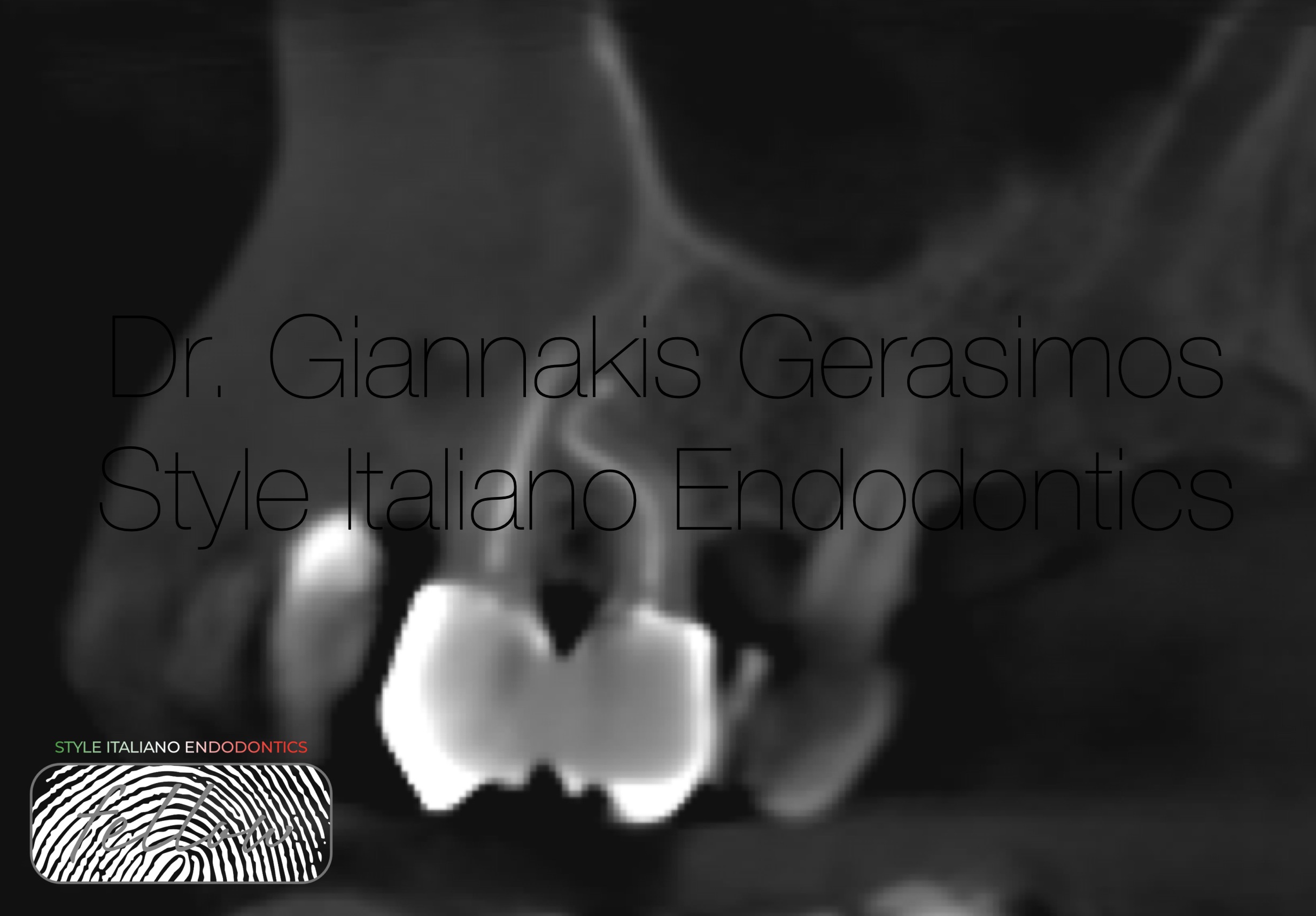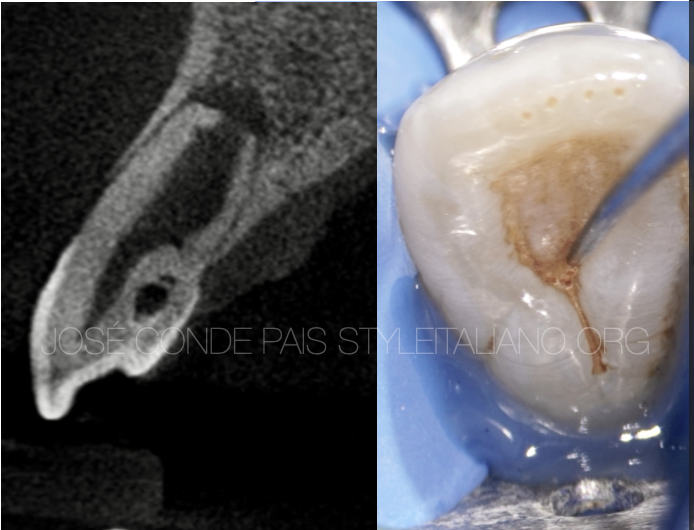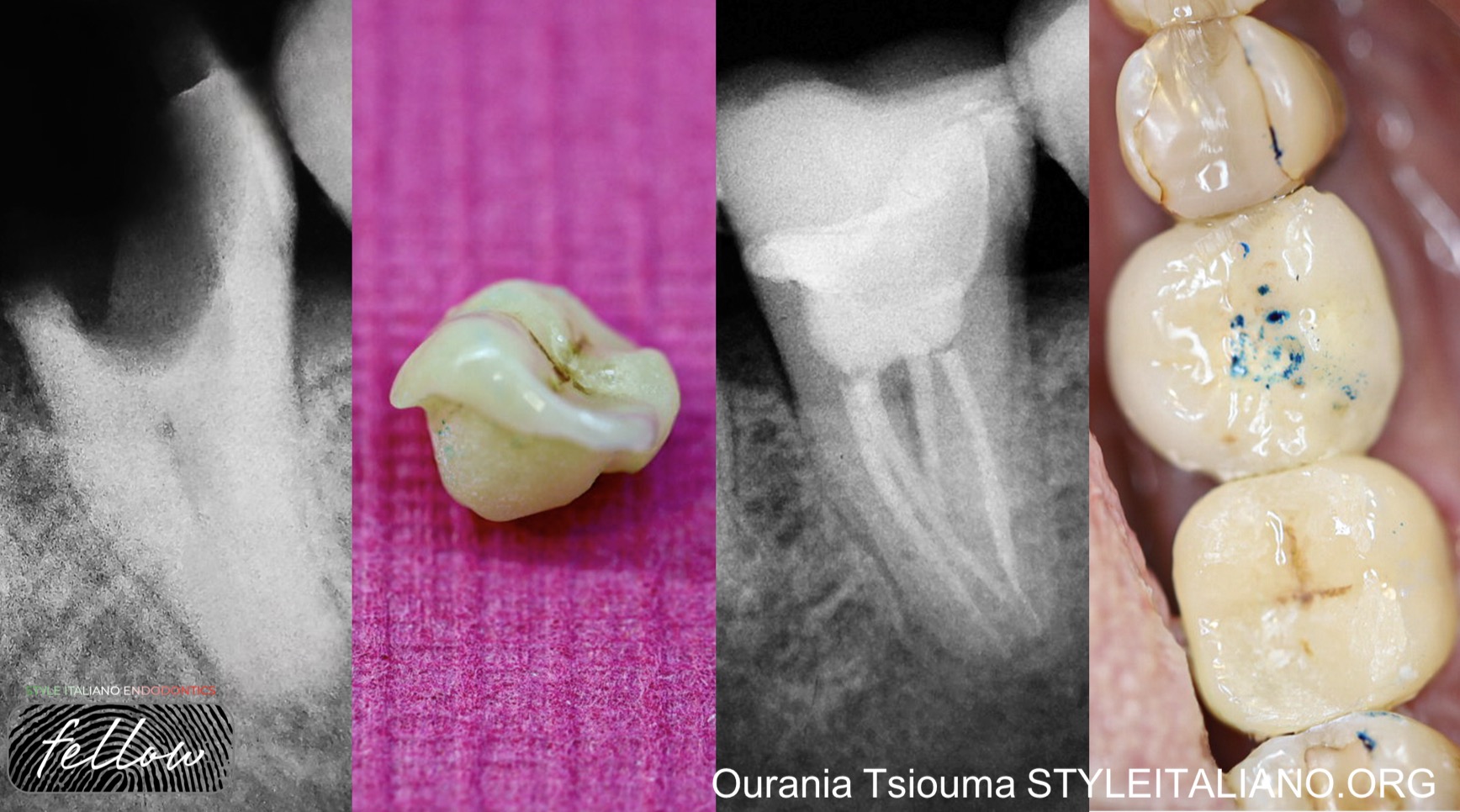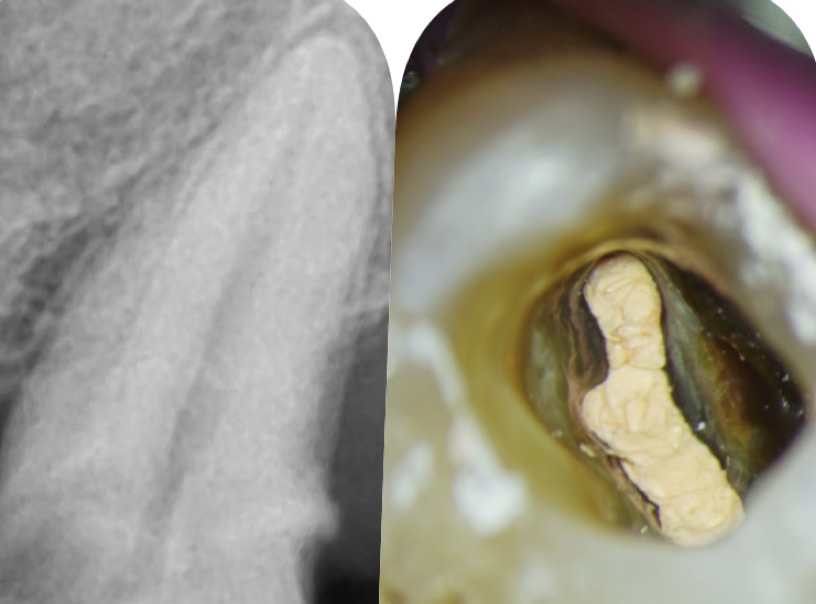Premolars are the most versatile teeth in regards of anatomy. One of the most challenging anatomical variations we have to face is dilaceration. Abrupt curvatures complicate the RCT especially when […]
 A story of a dilacerated premolar
A story of a dilacerated premolar
Premolars are the most versatile teeth in regards of anatomy. One of the most challenging anatomical variations we have to face is dilaceration. Abrupt curvatures complicate the RCT especially when […]
 Mysterious pathology, fascinating anatomy & healing- a case of NSRCT of tooth 44
Mysterious pathology, fascinating anatomy & healing- a case of NSRCT of tooth 44
A periapical pathology, could be a result of caries, trauma, periodontally compromised oral cavity or even a thermal and chemical insult to the tooth. Effective cleaning, shaping and disinfection is the key to a successful endodontic treatment. A deep understanding of the anatomy of a root canal system, is of high value while performing a non-surgical root canal treatment. We often come across mandibular premolars with aberrant root canal anatomies. They often present with multiple canals, splits and accessory canals.
This article describes a case of NSRCT of a mandibular premolar with 1-2 configuration and it presented with a big peri-apical radiolucency.
 Management of Type II dens invaginatus
Management of Type II dens invaginatus
Dens invaginatus (DI) is one of the rare malformations of teeth which results from an infolding of the dental papilla during the development of teeth. This defect gives rise to a possible communication between the pulp and oral environment, thereby increasing the susceptibility to caries, pulpitis, and pulp necrosis.
 Zoning Technique in Endodontics
Zoning Technique in Endodontics
The Zoning Technique is an innovative approach in endodontics that aims to optimize root canal treatment by dividing the root canal system into distinct zones and applying specific instruments and techniques tailored […]
 A C-shaped story: endodontic management and endocrown rehabilitation
A C-shaped story: endodontic management and endocrown rehabilitation
The C-shaped root canal configuration is an anatomical variation which is caused by the fusion of the mesial and distal roots either on the buccal or lingual root surface (1). […]
 Dealing with hard canals, the easy way.
Dealing with hard canals, the easy way.
This article demonstrates the protocols followed on two teeth with unique anatomical features in a conservative, feasible, teachable and repeatable way.
 The probability of two fives
The probability of two fives
With increasing number of reports and studies of unusual root canal morphology, It is of utmost importance that the clinician must have detailed knowledge of the pulp canal anatomy to achieve effectively proper cleaning and shaping of the root canal system. Failure to recognize the aberrant root canal anatomy will lead to an unsuccessful treatment and thus failure of the endodontic therapy.
This case report describes a very rare scenario of a mandibular right first molar with five root canals (three in distal root and two in mesial root) and a maxillary left second molar with also five root canals (three in the mesial buccal root, one in the distobuccal root, and one palatal) in the same patient.
 C-SHAPED MAXILLARY SECOND MOLAR
C-SHAPED MAXILLARY SECOND MOLAR
Root canal treatment of maxillary second molar can be very difficult . Beside the limited accesibility of tooth in mouth with limited mouth opening ,with complex root canal anatomy specially […]
 Management of the complex anatomy of lower premolars
Management of the complex anatomy of lower premolars
Variations in the root canal configurations are a great challenge for the endodontist during endodontic procedures. This necessitates the understanding of canal morphology before initiating the treatment.
 A mandibular first molar with 6 root canals:
A mandibular first molar with 6 root canals:
One of the most important prerequisites for successful endodontic treatment is the adequate knowledge and understanding of root canal anatomy. The mandibular first molar (MFM) seems to be the tooth […]
 Autotransplantation as an alternative treatment option
Autotransplantation as an alternative treatment option
Traditional transplantation, surgical extrusion and intentional replantation procedures are important treatment options that clinicians may consider performing in their daily clinical practice.